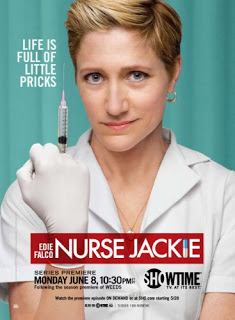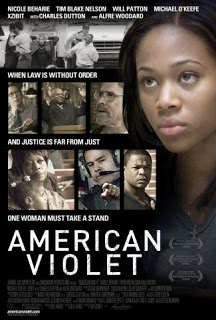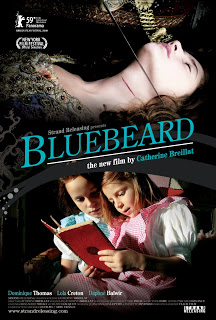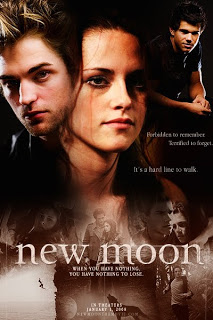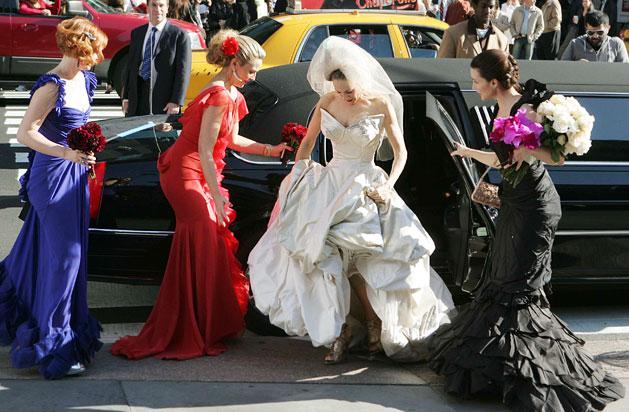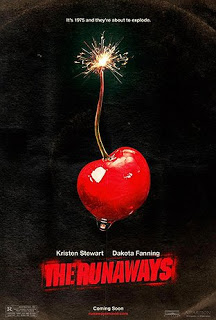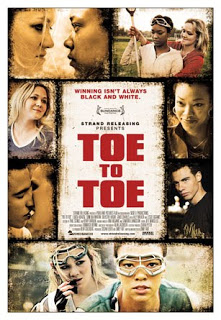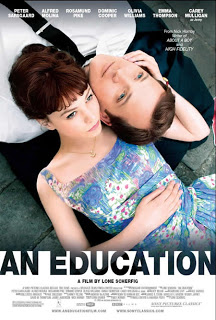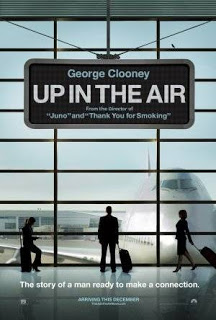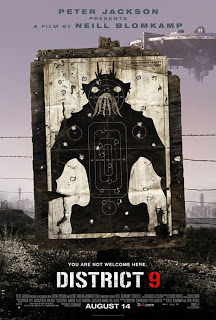Category: Uncategorized
Movie Review: American Violet
The film treats Dee with respect. We learn that her four children have three different fathers, but her private life is mostly kept private. When the DA questions Dee about “how many men she’s had sex with by the age of 24,” her lawyers quickly step in to remind them–and us–that a woman’s character is not to be judged by her sexual history. This was a refreshing moment in the film, when even in so-called women’s films, slut-shaming is regular and almost perfunctory. In another moment of the film, we see testimony from the DA’s ex-wife and daughter, and it’s the daughter’s mocking of her own father’s (racist) slut-shaming that ultimately brings him down. (An ironic and uncomfortable twist is that while Dee’s private life is off limits, the DA’s private life is the strongest testimony against him.)
American Violet is the kind of movie I don’t like to criticize, because it’s a movie interested in Doing Good. It’s a sincere film, it addresses real-life social problems, it has a heroine we root for and get to see achieve a victory, despite the odds. And, it’s enjoyable to watch. Doing Good movies rarely achieve blockbuster status; they typically don’t have large budgets, stars, or major marketing campaigns. Doing Good movies are the kinds of movies we wish the public, at large, would see. However, films that expose social ills tend to suffer from cliched characters, predictable narratives, and overly simplified stories. American Violet–despite its powerful performances—doesn’t escape these problems.
Everyone seems to agree that crack cocaine use is higher among Caucasians than any other group: most authorities estimate that more than 66% of those who use crack cocaine are white. Yet in 2006, 82% of those convicted and sentenced under federal crack cocaine laws were African American. When you add in Hispanics, the percentage climbs to above 96%. Since enactment of this law, the 100 to 1 ratio has had a devastating and disproportionate impact on the African American and Hispanic communities.
Ultimately, I liked this film, and encourage others to see it. I do feel ambivalence about it, and am a little disappointed in some of the choices made, but do think it’s a strong, woman-centered film.
The Roundup: Lady Gaga’s "Telephone" featuring Beyoncé
Survey Third Wave communities and one descriptive phrase keeps coming up over and over again regarding Lady Gaga—badass. In such spaces, no higher compliment could ever be paid than that. When so many women feel that their voices are routinely stifled or that they’ve been conditioned to stay silent while men talk first and act first, young feminists understandably find something courageous and enviable about women, particularly women their own age, who force the world to accept them on their own terms. Furthermore, Lady Gaga’s music videos in particular have directly, though a bit clumsily at times, taken on questions of same-sex attraction between women and done so in terms that are far closer to the way it actually exists in reality. The pure fantasy and grotesque parody of lesbianism, itself a construct clearly adopted by men, is at least pushed to the background of her work rather than set forth as the truth.
The first three minutes are lost on me and left me confused, offended, and too pissed of to appreciate the next few minutes. Had the video started when the song started, I might (might) have been able to stomach the rest of the prison scenes. However, after the objectification, glamorizing of lesbian fetishism, and excessive girl-on-girl violence I was too pissed to rationalize sitting through the first dance routine, which could have just as well been the Pussycat Dolls (whom Gaga has written for in the past). Feminist Gaga fans can try to justify this as another example of how she subversively turns what we usually find hot into something that leaves a nasty taste in our mouths and therefore makes a statement, but if any other artist (particularly any male artist) incorporated this much objectification and violence against women we would be outraged. Is it any different just because it’s a woman, or because it’s specifically Gaga?
What do you think about the new breed of younger pop stars — and some have accused Gaga of this — who claim bisexuality or a kind of pansexuality in an effort to use queer culture for their own personal gains?
That’s been going on since the dawn of time. Elvis stole from African American music. Everybody’s constantly riffing — Madonna stole voguing from poor, disenfranchised black drag queens in Harlem. This isn’t a new concept. I think there’s more reverence with regard to Lady Gaga as she’s obviously educated herself in her trajectory with visual arts practices and the stuff that she’s doing isn’t light stuff. It’s difficult when they’re making millions of dollars and placating to the masses — it’s tricky to maintain that, but I think she tries. And even including someone like me is a part of that. The thing that was kind of interesting was that in between takes I was getting kind of annoyed because the camera guys were really kind of drooling and talking about “girl-on-girl action” and I said, “What about boy-on-girl action?” And she turned to me and said “Oh. Do you identify as male?” [Laughs] And I said, “Well, probably more than you do.” And she said “I’ll be sure to tell people that.” We just had this abstracted conversation about gender in the middle of this shoot, which I thought was really weird and pretty interesting: A) that she would take the time and B) that she would even ask me about that.
Ms. Magazine Blog “Is Lady Gaga a Feminist or Isn’t She?” by Noelle Williams:
Her art provides a running commentary on gender, sexuality and beauty. There are hints of David Bowie, Prince and Madonna in the way she plays with sexuality, but while Gaga acknowledges these similarities she wants it to be clear she is something entirely her own. With her deliberate juxtaposition of conventional platinum blonde beauty and fashionably ugly costumes, she toys with conventional rules of attractiveness. Half of her appeal throughout 2009 seemed to be the question of whether or not she was pretty, whether or not people felt comfortable liking her. “I am not sexy in the way Britney Spears is sexy,” Gaga is quoted in the bio, “I just don’t have the same ideas about sexuality that I want to portray. I have a very specific aesthetic–androgyny.”
Replete with references to films like Caged Heat, Kill Bill, Thelma and Louise, and heaped with nods to golden age sexploitation from Russ Meyer flics to Betty Page pin ups to busty comic book heroines like Wonder Woman (H/T Lisa Duggan and Sam Icklow for IDing some of these for me), Telephone is a high femme pastiche of mini-epic proportions.
The plot is straightforward: thrown into “prison for bitches,” Gaga is bailed out by co-star Beyoncé (in a telling reversal of the usual hierarchy between white and black), and the two then set of on a mission of vengeance against Beyoncé’s boorish beau, played by male model/singer/actor Tyrese. But this bare summary belies the profusion of signifiers strewn across the surfaces of this visual feast of a video. To attempt to account for them all (crowdsource project anyone?) would leave any critic floundering on the shoals of interpretation. So I’ll just focus on one, ahem, prime signifier: Lady Gaga’s penis.
The video is peppered with both real (e.g. Miracle Whip, Wonder Bread, Polaroid, Chanel, Diet Coke, Virgin, Plenty of Fish) and fake products (e.g. Poison TV, Double-Breasted Drive-Thru, CookNKill Recipes). This combination of real and fake allows the video to both enjoy the benefits of product placement, and parody the enterprise in the same swoop. Once again, we’re dealing, I think, with a carnivalesque aesthetic, or a type of conceptualist art that parodies by displaying too loudly or too blatantly that which is being mocked. The comfortably familiar form is being used to market poison, and at the same time its used to promote Polaroid. Gaga’s having her cake and eating it too.
In this entire video, as well as, “Bad Romance” and “Paparazzi,” Gaga reverses this gaze in a variety of ways. She refuses the male heterosexual narrative as the only way to see the world, and presents her views in a decidedly “feminine gaze” or at least a gaze that does not abide by male standards. Women’s bodies are not present in “Telephone” for male pleasure, they do not progress a male storyline, nor are women defeated for male purposes of sex or domestication. Women are not “othered.” In some ways, the bodies seen here are for female pleasure, sexual perhaps, or at least aiding in seeing women in positions of power, both as prisoners and prison guards. Women are in control, even in prison and outside of it. Gaga and Beyoncé’s emotions, ideas, and selves drive the story of the music video, not men’s. Women are central, not peripheral, they are the main autonomous actors in control of their destinies. Even as we see women in traditionally powerless situations, in prison, as diner wage workers, or as objectified bodies for male consumption, these positions are problemitized, and their meanings changed. When we see women in these places, we do not get the impression that they are mere tools of the patriarchy. They have agency, they have will, and they are not the “other.” We get a unique and visually appealing story from women’s perspectives, ideals, and world view that is so lacking in today’s media.
Gudbuy t’jane’s “Lady Gaga sets the record straight:
As a trans woman, she mostly caught my attention due to the transphobic and intersex-phobic rumours about her being either trans or intersex. While these rumours were typically a product of living in a transphobic and transmisogynist culture, Lady Gaga’s response was one of gender and genital essentialism, stating that her vagina was offended by the claims.
To me, the absurdity of that mismatch is part of the point: incredible frivolity combined with serious issues. People go to clubs and complain about reception while prisoners cannot get a proper phone connection and are strip-searched for no other reason than the guards’ prurient interests all the time. Outside of a Lady Gaga video, however, it usually isn’t the same people who have a dance party and are abused in prison (at least not simultaneously), nor do the dance parties (which occur at the same time as mass murder) usually happen at the crime scene.
By collapsing the distance between these events, “Telephone” points to the absurdity of a world in which people dance even though they are aware that other people are suffering, an awareness intensified by the very medium for which “Telephone” was created.
Thus begins the epic dance break—celebrating a new America. An America that steers away from gender constructs. An America where you don’t have to wear pants! Lady Gaga is the modern-day Wonder Woman—a DC Comics superheroine created in the early ’40s and regarded as the model of the feminist movement. Created by Dr. William Marston, Wonder Woman is an Amazon princess sent to earth to assist America in the war effort. Called upon by the goddess Aphrodite, Wonder Woman was “created as a distinctly feminist role model whose mission was to bring the Amazon ideals of love, peace, and sexual equality to ‘a world torn by the hatred of men.” However, Wonder Woman loses her powers if a man binds together her trademark bracelets, and she’s commonly depicted as being chained by male villains and having to break free of their power and control. We see these details referenced through Gaga’s chained-getup in the prison sequence, and in the Wonder Bread appearance.
Fox News reaction:
Gaga’s relationship with feminism is uneasy and uncertain, not unlike my own, and even as she has more recently copped to being “a little bit of a feminist” after a long period of rejecting the term, her work seems more inclined toward interrogating and challenging culture, sexism, and exploitation without necessarily overtly condemning it. This video is no exception, dabbling as it does in lesbian undertones combined with a monstrous revenge fantasy and mass murder literally draped in American flags, and concluding with the infamous Thelma & Louise hand-clasp which serves as a forceful barring-of-the-door against the meddling of trifiling men who’d seek to break our terrifying yet compelling heroines apart. The visuals are riddled with sex from beginning to end, but it’s complicated sex, a queer romp dressed up in straight drag. The lingering shot on Beyoncé’s cleavage is so unabashed as to be uncomfortable, which is insane considering the amount of women’s cleavage media serves up on a daily basis, but like the product placement, we are accustomed to it being more subtle. The overtness here renders our standard voyeurism into something downright embarrassing. The prison-yard makeout-sequence is likewise skewed and queerified, as it shows a lesbian hookup that would be of great appeal to straight men if only it involved two women with larger breasts and more traditionally-feminine presentations; instead we see Gaga paired with a decidedly butch partner, whilst surrounded by fellow inmates representing a diversity of genders, shapes, sizes, and ethnicities.
Kelsey: so she went to jail for murdering that guy and it was supposed to be a statement about celebrity and fame and now she is sort of doing the same thing but starting in “fame jail” where there are lots of hot lesbians
Kjerstin: so she’s sort of addressing the intersex rumor, but as one blogger at gudbuytjane pointed out, is it transmysoginistic to be like “see, no dick!”
Andi: That’s definitely what I thought. Maybe she wants to start it up again?
Kjerstin: it also happens so early in the video
Kelsey: she has been so intentionally vague about the intersex thing, I’m surprised she’d address it like this (or maybe I’m not)
Kjerstin: it’s extra shocking
Kelsey: but yeah, like gudbuytjane said, it’s like “Oh thank God she doesn’t have a dick now I can relax”
In an interview with Carson Daly on LA’s 97.1 AMP radio, Gaga remarked that the video’s concept revolves around a critical look at the inundation of media in our modern lives and the sort of brainwashing the mass marketing of everything from tampons to pop artists to fast food creates when it tells us what to think. This makes me want to ask you girls some study questions: Is Lady Gaga trapped in a prison of what pop music is expected to be? Is that why she is so determined to escape? Is her “punishment” for being an independent woman — represented in the extreme by killing her sadistic boyfriend — a metaphor for being stuck behind the bars of what the record labels demand of their cookie-cutter pop artists? But wait a second, there are hot lesbians in prison. Is being sent to a jail full of sexy women a reward for ditching some man she didn’t really want? Where is the intersection of queerness, prison culture and femininity? Is homosexuality a behavior, an all-encompassing identity, or a complicated blend of both? So many layers here, like peel-and-eat lingerie (did I just say that?)
Because if there’s one thing that we’ve seen a thousand times over the past few decades, it’s old-style sexism dressed up as new-style irony. Does the fact that Gaga seems to be winking knowingly at the camera as she dances in a bikini make the vision any less predictable, any less boring, any less reminiscent of sexist video after sexist video that you’ve seen in the past few years? Nope. It’s a disappointment from someone who seems to be popping with so many ideas. Gaga will do something great, I’m sure. But this isn’t it.
If you find/have written any interesting Gaga-analysis related to “Telephone,” leave your links in the comments!
Guest Post: Tara is Better Not United
This guest post also appears at Professor, What If… and the Ms. Magazine blog.
Alas, to my dismay, the show’s bubbly focus on a recovered Tara Gregson (Toni Collette) meant that the “alters”–alternate personalities of this 21st century Sybil–were gone, thrown out like the unwanted clothing ceremoniously dumped into a charity bin in the show opener. Instead, we have happy, functioning Tara, and an upbeat musical soundtrack trying to manipulate us to believe that, indeed, all is well in the Tara-verse.
But we soon learn that Tara as one person, no longer suffering from dissociative identity disorder, is not nearly as fun or interesting as she is as five different people. Instead, the “true Tara” now displays some of the most annoying traits of all five of her alters.
She incorporates her Alice-esque alter by donning a 50s-style apron and throwing herself into a dinner party with the neighborhood’s token gay couple. She speaks her mind Buck-style (Buck was a beer-swigging male alter) when a neighbor commits suicide, bragging “The lady with all the personalities is not the most fucked up person on the block.” After the dinner party, her T-proclivities (that was the teenaged alter) come out, and she performs a manic Bollywood number, ending with provocative thrusting in her hubby’s face. Her sister Charmaine assures her new beau that Tara has not actually “transitioned” into the other personality, indicating that perhaps it would be better if she did, while Tara’s husband Max is visibly worried that the new “sane” Tara might be more insane than before.
Given the show’s emphasis on the self as performative, and on the impossibility of performing to societal standards (especially if one is female), this suggestion that Tara’s recovery may not be a step forward is intriguing. Though the show reveals all the difficulties Tara’s disorder causes for her and her family, it also seems to be indicating that the real problem is a society that expects us to perform in very particular, stable and normative ways. These regulatory ideals are so oppressive that we either bind ourselves into limited roles (i.e., Alice-the-50s-housewife) or run the risk of being seen as “crazy”–as “normal” Tara is when she laughs too loud, makes a suicide joke or has too much fun at a dinner party.
The show’s underlying critique of such normative ideals, and the relatively freeing notion of embracing the self as performance, is evident in other characters as well. Marshall, Tara’s closeted gay son, tries hard to be serious, smart and talented, but finds that flaunting his identity by sitting at the “gay-ble”–the school lunch table where gays and their allies sit–is a welcome relief, and results in him joining a campaign at his school aimed to raise queer visibility.
Charmaine, Tara’s sister, struggles with regulatory norms in choosing between a relationship with traditional hunk Neil vs. unattractive and vertically challenged Nick, who is personality-privileged and emotionally supportive. Charmaine tried to follow normative requirements in the past by augmenting her breasts to please her then-husband, a choice that resulted in lopsided and off-center nipples. Now that she has had these “corrected,” she seems to believe she can do better than short, balding Nick.
The character of Tara’s teenaged daughter Kate has thus far been largely challenged around the regulation of her sexuality, as indicated with Tara’s concern that she was not able to “micromanage her daughter’s vagina.” Kate’s struggles with a creepy boss and an abusive boyfriend expose a society populated by males wishing for similar micro-managing power.
Max appears to be the character least affected by social norms. He doesn’t seem to care that his wife is far from typical, worrying only about her health and happiness rather than what others think. He does not condemn or regulate his son’s sexuality nor attempt to micromanage his daughter. If any character seems too good to be true, it’s him. This is perhaps why Max is a bit empty as a character: a sort of dad/husband placeholder who comes off as boring and conventional in a cast of otherwise entertaining family members.
While Robert Abele laments at L.A. Weekly that “United States of Tara plays like surface feminism with an added gloss of snark and a bewilderingly blah sentimentality,” I would counter that the snark is integral to the feminist critique the show enacts. The snark reveals that our “normal” selves are “blah,” and thus we should embrace those aspects of our identity that subvert regulatory norms lest we end up living in a world full of bores.
Diablo Cody, the show’s creator, readily admits that she asks of everything she writes, “How am I going to sneak my subversive feminist message into this?” With Tara, she sneaks in this message beautifully, conveying that societal ideals–be they a stable self, heterosexuality or conventional attractiveness–do not an exciting world (or episode) make.
Natalie Wilson, PhD is a literature and women’s studies scholar, blogger, and author. She teaches at Cal State San Marcos and specializes in the areas of gender studies, feminism, feminist theory, girl studies, militarism, body studies, boy culture and masculinity, contemporary literature, and popular culture. She is author of the blogs Professor, what if…? and Seduced by Twilight. She is a proud feminist mom of two feminist kids (one daughter, one son) and is an admitted pop-culture junkie. Her favorite food is chocolate.
Movie Preview: Bluebeard
Written and directed by Catherine Breillat, Bluebeard (Barbe Bleue) likely explores the same themes that Angela Carter highlighted in her retelling, “The Bloody Chamber.” Read the original fairy tale by Charles Perrault here and Angela Carter’s version here.
Having built a career on provocative, sexually explicit yet cerebral fare (“Romance,” “Sex Is Comedy”), Catherine Breillat shocked auds with her 2007 period piece, “The Last Mistress,” because it was not all that shocking. Now the Gallic helmer’s latest, “Bluebeard,” features considerable blood but no sex. This offbeat but compelling take on the tale, arguably the first serial-killer yarn, emphasizes sisterly bonds but still gets to the original story’s heart of mysterious darkness with impressive results.
The New York Times‘ Manhola Dargis:
In “Bluebeard,” a sly rethink of the freakily morbid fairy tale, the filmmaker Catherine Breillat makes the case that once-upon-a-time stories never end. Divided into two parallel narratives — one focuses on Bluebeard and his dangerously curious wife, while the other involves two little girls in the modern era revisiting the tale — the movie is at once direct, complex and peculiar. It isn’t at all surprising that Ms. Breillat, a singular French filmmaker with strong, often unorthodox views on women and men and sex and power, would have been interested in a troubling tale about the perils of disobedient wives. Ms. Breillat never behaves.
You can watch the trailer here.
Movie Review: The Twilight Saga: New Moon
The Twilight Saga: New Moon. Starring Kristen Stewart, Taylor Lautner, Robert Pattinson, and Billy Burke. Written by Melissa Rosenberg (screenplay) and Stephenie Meyer (novel). Directed by Chris Weitz.
(For those of you unfamiliar, the Cullens, who are Edward’s vampire family, only drink the blood of animals to survive, even though they prefer human blood. The other, evil vampires in the movie, murder humans at will. Tsk, tsk.)
Twilight portrayed Bella as the passive object of vamp-Edward’s desire, who needed constant saving by him, from other vamps and from other men and from runaway cars, and who couldn’t make any decisions on her own throughout most of the movie. It shifts a little in the end, when Bella runs off to save her mother, ignoring the advice of the vampires who want to protect her. But by becoming an active subject in that scene, she’s punished, ultimately finding herself in a situation where Edward must save her yet again, literally by sucking poison from her blood.
But New Moon! How did you make me like you? It makes no sense—Bella still ends up in constant need of boy-saving, and she loses her freaking mind for months when Edward breaks up with her, which is not melodramatically showcased at all I swear, ha, by her constant nighttime screaming fits that force even her dad to run to her rescue. For the most part, Bella seems powerless, at the mercy of Edward, at the mercy of her nightmares, and eventually, at the mercy of the evil vampires who want to kill her (as punishment for Edward, who killed a vampire in Twilight).
So why did I find myself finally turning into an uber-fangirl as I watched? Because this time, the film is, dare I say … complicated.
Enter Jacob, Bella’s good friend who just happens to be a werewolf and who just happens to have the most incredible abs I’ve seen since Brad Pitt in Fight Club and who just happens to walk around with his shirt off constantly. And let’s remember the early scene in the school parking lot, where Bella watched as Edward walked toward her in exaggerated slow-motion, hair and button-down shirt blowing wistfully in the breeze, the camera steadied on him as Bella and me and fangirls across the country, yes, I’m going to say it, swoon. And then I started to wonder, “Is Bella entirely powerless?”
Not necessarily.
Because what strikes me most about the men in the Twilight saga is their desire to be looked at by Bella, which (fangirls everywhere unite!) positions Bella as the active subject (the gazer) and the men as passive objects (the gazed at). In the first film, Edward removes his shirt in the sunlight, revealing his twinkling vampire skin, and, upon seeing it, Bella says, “You’re beautiful.” She uses those words again in New Moon, this time with Jacob. When he says something along the lines of, “Why are you looking at me?” She responds with, “You’re sorta beautiful.”
Interestingly, (fangirls everywhere unite!) this direct physical objectification of women doesn’t exist in either movie—for instance, we don’t get traditional scenes of scantily clad girl-vamps trying to seduce men who they eventually eat (played as girl-power when it’s really just male fantasy).
But Bella isn’t without self-scrutiny. In the opening scene of the film, Bella dreams of herself as an old woman with Edward still at her side. That scene reveals an important plotline: fear of aging. Bella sees herself through the eyes of Edward (and therefore, men in general). She sees herself getting older while he stays young and twinkly-beautiful. She says, “You won’t want me when I’m a grandmother.” These feelings stem from living in a society that devalues aging women, and I like that the film explores the issue. Edward’s response? “You obviously don’t understand my feelings for you, Bella.”
Okay, so this is a total fangirl fantasy, right? I mean, a beautiful man loving you for what’s on the inside? I mean, honestly, we’re smarter than that, right? Right?! (Am I kidding?)
Still, in New Moon, even though Bella performs reckless acts, like jumping off a cliff and wrecking a motorcycle, just so faux-Edward will magically appear in some wavy fog-mist to male-dominate and tell her it’s dangerous, she still performs reckless acts. She makes decisions. She risks her life. For love! Ha. Of course, the fact that Edward can no longer save her—he isn’t physically there for real—means Jacob must step in. He does nice things … like taking off his shirt to reveal his Brad Pitt in Fight Club abs and to coincidentally wipe the blood from her forehead. He turns into a werewolf and saves her from one of the bad vamps. He performs CPR. Oh Jacob!
But then, after all this constant being saved by vampire-men and wolf-men, something amazing happens. Bella saves Edward. And even after she saves him, she saves him again, by convincing the Lead Evil Vampire God or Whatever to kill her instead of Edward. He doesn’t kill Bella, of course, because he becomes interested in—check out this awesomeness—her immunity to vampire powers. That’s right: the vampire mind readers can’t read Bella’s mind and the Dakota Fanning vampire can’t inflict mystical pain on Bella just by looking at her. It’s like Bella’s a vamp’s version of a superhero!
Look, is the film flawed? Yes.
The objectification of the men, for instance, also becomes an objectification of The Other (vampire/werewolf). Bella wants Edward to turn her into a vampire so they can be together forever but also because she doesn’t want to age (i.e. become undesirable). Bella can’t function when Edward leaves her, and she risks hurting herself just to get a glimpse of him again. Edward is 106 years old and she’s 18—would that work if the genders were reversed? And, when Edward agrees to turn Bella into a vampire, he insists that they marry first, which plays an awful lot like some creepy, conservative, let’s-get-married-before-I-take-your-virginity nonsense, creating that metaphor for teen abstinence vibe again.
But Bella isn’t a one-dimensional character anymore. In New Moon, she’s much more fleshed out, and perhaps most importantly, she doesn’t have to take her clothes off or perform a certain kind of femininity to get the boy. Edward falls for her because he finds her intriguing: he can’t read her thoughts (see True Blood), and he’s drawn to her because she smells delicious, sex metaphor? Jacob falls in love with Bella after they spend significant time together; it’s not some love-at-first-sight fantasy where he sees Bella, and the camera pans from her feet all the way up her legs and finally to her face where she either smiles coyly or looks down shyly.
As Dana Stevens writes in her review of New Moon:
The feminist in me wishes a lot of things. But say what you will about the Twilight films; they take female desire as seriously as a grad student from the early ’90s. The whole overcooked vampire vs. werewolf mythology (which also involves packs of shirtless wolf-boys and a sort of vampire Pope, played with camp glee by Michael Sheen) is, in essence, an excuse to place the viewer in Bella’s Timberland boots: torn between two flesh-eating monsters, feelin’ like a fool. Haters may construe Bella as a passive victim eager to be served up as vampire meat, but she’s the subject of this love story, not its object; she’s the lover while Edward and Jacob are her diametrically opposed beloveds, one hot-blooded (Jacob runs a constant body temperature of 108 degrees), the other pale and cold as stone.
Be sure to check out the Salon article, “Could New Moon Be a Feminist Triumph?” where Kate Harding argues that the movie’s box office gross could be a game-changer for the future of women in film.
Review in Conversation: ‘Sex and the City: The Movie’

Stephanie’s response:
The reason I refuse to take Sex and the City’s self-proclaimed celebration of sisterhood very seriously is because the women rarely permit one another to slack off on their duty to maintain Fabulous Fashionista status at all times. As I stated earlier, Miranda gets shit for not porn-waxing and Samantha gets shit for gaining weight (from comfort-eating due to her tanking relationship—because that’s another thing we all do, ladies!). They permit Carrie’s days of depression when Big leaves her at the altar, literally feeding her at one point, but I still couldn’t help but cringe at that simultaneous depiction of female-infantilizing coupled with creepy mommy-moment.
Yet I believe they do really love one another. You’re right to point out the refreshing portrayal of women who aren’t in direct competition or who aren’t conniving against one another. One could also point out many scenes where genuine love exists among them—my favorite scene is when Carrie sucks it up and takes the train (but not without fur coat!) to Miranda’s apartment so she won’t be alone on New Year’s. It feels … honest, in a way that so much of the rest of the film doesn’t.
I never saw the television series. From what I’ve heard and read, the women were very much unashamed sexual beings. So I had to ask myself after I saw the movie, “Where the hell is all this sex I’ve been hearing about?” Samantha has sex exactly zero times on-screen. Miranda struggles with sex and her husband’s infidelity—it’s very much implied that he cheats because she won’t sleep with him (another one of her wife-duties shirked). Charlotte claims to have a wonderful sex life, but … where’s the evidence? Perhaps the film wants to show the progression of their lives and the complications that might come with aging, but they chose to do it by regressing to traditional gender expectations regarding marriage and pregnancies and preoccupations with couple-hood.
I get the feeling that the show, while still portraying the women as rich and fashion-obsessed, actually represented their shunning of traditional, more conservative ideas regarding adult womanhood. They didn’t have to get married and have babies and buy houses. They could have sex! And live in the city! And have fulfilling careers! If that’s the case, the film-version seriously dropped the ball.
With scenes like Miranda telling her child to “follow the white person with the baby” when they’re looking for a new apartment in a less-rich neighborhood; with scenes like Carrie showing up to reclaim her metaphorical glass slipper while her metaphorical prince conveniently awaits in her giant, specially built metaphorical (closet)-castle—the film only reinforces good ol’ traditional American values about class, heterosexual relationships, and especially about womanhood.
Movie Preview: The Runaways
Discussing the sexual politics of the film, Karina Longworth, of The Village Voice, says
When the band turns on Cherie for submitting to a solo soft-core photo shoot, it’s because Joan understands that unless they set the terms of their own sexual empowerment, and its commoditization, then what’s really happening is exploitation. “You could say ‘No,’ ” she tells Cherie. It’s a shock to the blonde; it’s also the thesis of the film.
Preview: Toe to Toe
In his NYT review of Toe to Toe, A.O. Scott says
If “Toe to Toe” were a young-adult novel, it would be embraced and argued about in classrooms and eagerly read by thoughtful teenage girls. The film’s observations about race, class and friendship are clear and accessible without being overly didactic, and its sometimes harsh candor about female sexuality would not be unfamiliar to devotees of contemporary adolescent literature. But because it is a movie — the first nondocumentary feature film by the writer and director Emily Abt — “Toe to Toe” is likely to languish in art-house limbo, far from the eyes of its ideal audience.
Tosha (Sonequa Martin) is a poor African American girl in a private prep school who is pushed by her grandmother (Leslie Uggams) to believe in herself and her ability to get into Princeton. She also encourages her to play lacrosse because no African American girls do. It is on that field that she meets Jesse (Louisa Krause) a troubled, sexually provocative white girl who has been kicked out of many schools. Jesse and Tosha are drawn to each other and become friends even while the outside world is conspiring against them. But like most teenage girls they also compete. Their friendship is messy, and at times disappointing and destructive. But they try, which is more than can be said for Jesse’s busy single working mom (Ally Walker) who is so oblivious to her daughter’s needs and desperation that you want to throttle her.
Written and Directed by: Emily Abt
Movie Review: An Education
 *This is a guest post from Jesseca Cornelson.
*This is a guest post from Jesseca Cornelson.
I had high hopes when I saw that the screenplay was adapted by Nick Hornby. His story “Nipple Jesus” ranks among my favorite ever, and I was impressed with his book How to Be Good, which is written from the first-person point of view of a doctor mother who strays from marriage to her househusband. In each of these—the story, the novel, and the film—I find his presentation of the moral ambivalences to be the most striking element. Each, it turns out, is concerned with how people negotiate the appearance of morality with actual morality, and each implicates pretty damningly middle-class values of maintaining an appearance of morality while being oh so quick to compromise any actual morals the moment it becomes convenient or self-serving. It makes me wonder how much of Hornby himself we hear in David and Danny when first one tells Jenny not to be bourgeois in her moralizing and then the other turns her moral condescension around on her by noting that she had watched them steal from little old ladies without saying much either. I guess I should admit that I’m using “morality” and “moralizing” to stand in not only for everyone’s obsession with Jenny’s virginity and the various duplicities perpetrated in the film, but also for that middle-class form of snootiness that is so quick to judge others in its desire to be respectable.
An Education is at its best when it subtly complicates and plays against audience expectations. The scenes where Alfred Molina’s jolly but domineering Jack practically stutters and falls over himself as he is charmed by David are delicious. We, wise audience, see how easily the big man’s desires for upward mobility are used to seduce him as well. Dominic Cooper’s Danny, David’s art thief buddy, is worried enough that Jenny will get hurt that he says something to David about it, but then doesn’t actually do anything about it except dance flirtingly with Jenny.
What bugs me is how tidily Hornby’s script draws on familiar types for characterization and sets up a whole series of foils. Take Olivia Williams’ portrayal of Miss Stubbs, Jenny’s English teacher. The movie tells us in a conversation that Miss Stubbs is both smart and pretty (unlike some films which present pretty actresses as ordinary—Kate Winslet is a Plain Jane in Little Children, puh-lease!). And yet the film presents Miss Stubbs as dowdy, as if smart women are incapable of doing anything other than wearing severe buns (or, for one all-too-brief scene, a ponytail that manages to be both severe and sloppy) or compulsively quaffed with prim bobs, like the headmistress’, something like an upper-class, executive severity. Yawn. And how convenient that after Jack’s rant about Oxford trees, school trees, private tuition trees, and pocket money trees growing out in the garden, David justifies his art theft by saying that “these weekends [in Oxford and Paris], and the restaurants and the concerts don’t”—here it comes!—“grow on trees.” Convenient, too, the discussion in Jenny’s English class on Mr. Rochester’s blindness in Jane Eyre and King Lear, with its own themes of blindness. When it comes to David, Jenny and her family are so hungry for the world he offers that they are willingly blind to his deceits. Jenny watches gleefully as he forges the signature of C.S. Lewis, whose acquaintance he falsely claims in order to get Jenny’s parents’ permission to take her to Oxford for a week, and Jack later tells Jenny that he and her mother Marjorie (Cara Seymour) had heard on the radio that Lewis had long since moved to Cambridge and rather than accept David’s lie they convinced themselves that the radio announcer had it all wrong.
The script isn’t bad. After all, if movies didn’t routinely take shortcuts by using familiar, stylized codes for characterization, they couldn’t tell their intricate tales in about 100 minutes. It’s just that the script is so tidy and effective that it doesn’t come anywhere close to transcending its form. At times I wondered if the film would have felt as artful if it had been cast with more familiar Hollywood types, say Julia Roberts as Miss Stubbs or Anne Hathaway as Jenny, both of whom I find exude a sweetness that always makes me aware of how terribly charming they are. Would the film have been as engaging if everyone had American accents? I wonder if audiences’ own aspirations to sophistication might make us a bit blind to how ordinary this film is.
And here’s where I want to shift gears and put An Education in conversation, however briefly, with another film from this year that blew me away, Lee Daniel’s Precious, which also features a young woman, who’s been manipulated by an older man and whose hopes for the future are likewise pinned to her education. I know Precious has been accused of being exploitative, and maybe it is, but it is a far more interesting film, in terms of characterization alone. Here we have another female teacher who reaches out to her young student. And while Paula Patton’s Ms. Rain is also smart and pretty, she’s a fully developed character and not just a type. She in fact is presented as pretty and well groomed (a pretty, neatly dressed, well-groomed lady English teacher, oh my!) and, in another surprise, she’s a lesbian! Ms. Rain’s relationship with Precious, far from being limited to a few words of encouragement or knowing warnings, is central to the film. In An Education, all of the relationships seem comparatively superficial. Jack’s semi-mock anger at having to pay for so many lessons and longing for social standing is nothing compared to Mo’Niquie’s brilliant turn as Precious’ self-loathing and enraged mother, who is herself starved for affection.
And back to that ending. Holy voice over! It’s never a good sign that all of a sudden you need a voice over to close a movie after a minute-long montage of redemptive studying. How tidy, how comforting: see Oxford was the way to go after all! I would have preferred if the film had ended with the long closing shot of Jenny hugging her knees on the stairs, her face caught somewhere between relief and worry, not fully capable of enjoying her victory. Yeah, I know: The Graduate. But we all get off easy when the movie lands very near where it would have had Jenny never met David. Oh, sure she’s now been to Paris and all the boys she dates at Oxford are, we’re told, really boys. But her earlier questions about the value of an education and the limited options for women go unanswered. She was right to tell Emma Thompson as the headmistress that “it’s not enough to educate us anymore. You’ve got to tell us why you’re doing it.” It is indeed “an argument worth rehearsing”—an argument that the film fails to rehearse even as it resolves with Jenny’s acceptance to Oxford. What is the value of an education if the only things you can do with it are teach or go into civil service? Compare that to Precious, whose closing moments of victory aren’t tinged with yet another level of superior condescension, but rather present a young woman, HIV-positive before the AIDS cocktail, walking into the sunlight hand-in-hand with the children fathered by her own father. It’s a much more genuine ending. What do I mean by that? I suppose that the victory is both more humble and more hardly earned. As Precious walks down the street, we know her life cannot help but hold more difficulty and heartbreak. As Jenny cycles carefree down a different street, we suspect that the Oxford education will serve her just fine. So maybe what I mean by genuine is that Precious offers up the rare ending that opens out, leaving the audience with a sense that the character’s life and struggles will continue in spite of her current moment in the sun.
And isn’t that more like real life anyway? I know boatloads of smart, pretty women who find disappointment in their careers and relationships as much as those of a plainer sort, but we don’t really get the sense that Jenny will struggle with the difficulties of being a smart woman in 1960s Britain that she had so clearly articulated earlier in the film. And that seems a bit counterfeit.
Jesseca Cornelson is currently working on a collection of documentary poems about the history of Mobile, Alabama, which will serve as her dissertation for a doctorate in English and Comparative Literature from the University of Cincinnati. She blogs about her research and writing at Difficult History.
Movie Review: Up in the Air
 *This is a guest post from Kate Staiger.
*This is a guest post from Kate Staiger.
The film begins by examining an employee’s reaction as he is fired by Ryan Bingham. Bingham guides a tragic moment into a hopeful possibility with a speech he uses on many of his subjects. He is good at his job, but no matter how good he is, it doesn’t take away from the desperation of unemployment. The movie’s plot could begin and end with this theme; an exploration of what it’s like to have the job as corporate assassin, but it doesn’t. The experience of firing and being fired takes the backdrop, while other plot lines emerge and take the movie through a series of love-twists and moral-turns.
Early on in the movie, Bingham is joined on the road by his new, pesky associate, Natalie (Anna Kendrick). Natalie possesses all the qualities of a young, overly-confident college grad. Her character is not a part of Kirn’s novel, though appears in the movie as a sort of moral compass for Bingham (the novel offers disease as Bingham’s wake-up call). Natalie challenges all of his life-decisions with her know-it-all youthfulness. Their contrast of philosophy, hers being more traditional, his being non-committal, is occasionally interesting. But most of the time, she just comes off as a stompy-teenagery type that adds drama instead of story.
Bingham’s other female sidekick is Alex (Vera Farmiga), a sexy, strong-corporate-woman. She meets Bingham, a fellow super-traveler, in a hotel bar. They hit it off, do the deed, and she becomes the love interest. They exchange contacts and meet for booty calls in cities where they happen to cross paths while on business. As their relationship progresses, he goes through the formal “sworn-bachelor-stumbles-into-love” process, schlepping it all with sentimentality and making it confusing to understand the direction of this movie. Aren’t I supposed to be watching a movie about the tragedies of people losing their jobs? Or am I supposed to be focused on Ryan Bingham’s thawing heart? Or no, it’s this: Ryan Bingham has a hard job and travels a lot. It makes his life experience void of human connections. He is now in the process of making it better as a result of his pesky sidekick on one shoulder, and his hot woman-equivalent on the other. YES!
This movie is fun to watch. The typical Clooney exploits are there; dashing smiles, good hair and clothes, favorable lighting, and witty bantering all carry him through the movie. Oh! And the very funny Jason Bateman plays the ruthless boss. AND the movie passes 2/3 of the Bechdel Test; it’s just that the women leads’ conversations with one another happen to be about their ideal man. Damn. The idea for the movie is appealing, the dialogue, at times, is smart and funny. The movie runs its course through predictability and wraps up with an ironic ending (which is actually good), but “Best Picture” at the Oscars? I’d be surprised…or wouldn’t I?
Kate Staiger lives in Cincinnati. Her current interests include: free-internet programs, fixing her toilet all by herself, and the band A Hawk and A Hacksaw.
Movie Review: ‘District 9’

*This is a guest post from Sarah Domet.
District 9: A Film I Want to Like
District 9, directed by Neill Blomkamp, depicts a futuristic Johannesburg, South Africa, nearly two decades after a massive alien spacecraft grinds to a halt in the sky, hovering silently just above the cityscape. The malnourished, bipedal, crustacean-like aliens, given the derogatory nickname “prawns,” now live in a militarized refugee camp, aptly named District 9 and policed by the South African government. However, crime, weapon trade, and even interspecies prostitution have overrun this filthy alien shantytown, and soon Multi-National United (MNU), a private company, is contracted to relocate the prawns to a more easily patrolled area, one much farther from the city limits. Enter Wikus van der Merwe (Sharlto Copley), a middle-management Yes-Man put in charge by MNU head (coincidentally, also his father-in-law) to lead the evacuation and relocation of these creatures. (His primary job is, hilariously, to go door-to-door, politely asking the prawns to sign an eviction notice while MNU mercenaries with machine guns look on. How bureaucratic!)
However, after a karmatic run-in with some dark, oozy liquid from an alien weapon he confiscates, Wikus contracts a particularly nasty virus, the main symptoms which turn humans into prawns. The film follows Wikus on his pursuit to find a cure for his disease, which entails working closely with Christopher Johnson (Jason Cope), an intelligent and sensitive prawn, to relocate the confiscated liquid; evade the MNU folks, including his evil-doer father-in-law, who are trying to kill him for his unique DNA; and heal his broken relationship with his wife, who believes, according to the lies of her father, that Wikus has slept with an alien. Cue Bill Clinton: “I did not have sexual relations with that woman!”
Science fiction is often a useful allegorical genre that allows filmmakers to discuss socially and politically charged issues in a way that is palatable to average moviegoer. Take Minority Report, for example, or The Matrix, or the film-adaptation of Orwell’s novel 1984. District 9 attempts to borrow from this rich tradition, and it’s nearly impossible to critique this film without pointing to the overt, sometimes too obvious, racial commentary that serves as the backbone of the plot. District 9 is, after all, set in South Africa, the geographical epicenter of Apartheid. However, to the BitchFlicker who turns to this movie looking for deep political or social commentary, I say this: Don’t waste too much time looking. While the film seems to want to reveal a reverse racism, one where the historical victims (South Africans) become the villains, propagating against the prawns the same violent and discriminatory acts that were once committed upon their own people, in the end the movie either: a.) substitutes gunfire, gore, or special effects at any moment the movie veers too far from the surface, b.) relegates Big Ideas to Small Peanuts by reducing the plight of the prawns to the pursuit of Wikus’s happiness, or c.) reinforces the very racist notions that it wishes to resist (see representation of Nigerian gangsters.)
If you’ve seen the Lord of the Rings trilogy, you’re aware that Peter Jackson is the master of the Buddy Film genre. It should come as no surprise, then, that Jackson, the producer of District 9, brings us yet another masculine-charged cinematic world, full of gore, gun fights, chase scenes, buddy bonding (even if interspecies), and special effects, but a world also nearly void of female characters.
District 9 operates with what I’d call an absent feminism, which isn’t quite an anti-feminism but a disregard for a female world altogether—except when a minor feminine presence functions as off-stage impetus for the lead character. Aside from a few bit parts, the most prominent female role is that of Wikus’s wife, Tania (Vanessa Haywood), who, although rarely seen onscreen, becomes the driving motivation for Wikus to risk his life to find the cure for his “prawnness,” befriending, out of necessity, Christopher Johnson, the same alien he tried to evict earlier in the day. (Wikus didn’t know then that Johnson actually built his shack atop the Mothership’s missing module; he’s been diligently working for twenty years to fix it, and was nearly finished when pesky Wikus confiscated that black fluid.)
Wikus’s wife, who is given no real identity, save the fact that she is torn between the age-old allegiance to her father and loyalty to her husband (implying that she most certainly “belongs” to one or the other), won’t relinquish hope of her husband’s return by the film’s conclusion. Someone is leaving strange gifts on her doorstep, gifts oddly similar to the ones dear hubby Wikus used to give her. Blomkamp insinuates that she’s a steadfast wife who will do her wifely duty and wait faithfully for her disappeared husband. The viewer is given no back-story or insights into their relationship; yet, forced upon us is the heavy-handed notion that they really do love each other—like, in that super-deep, eternal-love kind of way. Their story, of course, is a bottom-tiered thread in the narrative.
The final scene contains the most sentimental gesture of the film; Blomkamp depicts a now full-prawn Wikus sculpting a rose from a heap of scrap metal. Ah—a delicate rose amidst the muck and hopelessness of an alien nation. Perhaps most disturbing is the emotional weight Blomkamp wants this scene to carry: Poor Wikus! Now he’s the other race, er, I mean species! Will that Christopher Johnson ever return with the magical cure for Prawness, as he promised?
Poor Wikus? What about the entire prawn nation, displaced noncitizens forced to live in the squalor of regulated militarized zones? What about the fate of millions of other prawns with more troubling stories (such as genocide, for one) than a nebbishy Yes-Man turned courageous No-Man turned Prawn? But, like, he’ll really, really miss his wife! And, like, they can’t be together if he’s a prawn, now can they? But Look! He makes her flowers out of trash! How sweet!
Perhaps Blomkamp’s vision is to convey the notion that our greatest hope for an internationally practiced humanism is to fully experience the isolation and desperation at the individual level. I want to believe that this is his message. But I fear I may be giving him too much credit, for in the end Blomkamp never fully considers the implications of violent discrimination and segregation on anyone but (white, male) Wikus, the original perpetrator of this alien apartheid in the first place. In the end, Wikus becomes a victim, too, yes. However his victimhood is meant to be understood as a courageous act of martyrdom, and, more specifically, one of choice. After all, Wikus told Christopher Johnson to board the Mothership without him; Wikus would stay behind to fight the bad guys. If nothing else, Wikus was given the luxury of choice and self-determination, a luxury not afforded to the “others” of this film, woman and prawn alike.
I want to like District 9—I really do. And I will admit to enjoying the film on a simple story level. There’s plenty to admire, including the visual grittiness, the quickness of the pace, moments of dark humor, and the cool special effects, if you’re into that kind of thing. The script is original, too, and examines the “Man vs. Alien” genre in a new and interesting light, asking the pointed question: What the heck would we do with millions of immigrant aliens if they ever came to Earth?
However, I couldn’t help but think there was a certain dishonesty about the movie, too. Instead of using science fiction to serve the purpose of political allegory, District 9 uses political allegory as a Trojan horse—supplanting an action-packed buddy movie in the place of a film that initially promises the viewer something much more substantive.
While I don’t think this film will win the Oscar for Best Picture, I certainly don’t think it’s the worst film ever nominated. If nothing else, District 9 does generate discussion about some often taboo topics, even if the film itself doesn’t provide any satisfying answers.
Sarah Domet received her Ph.D. in English Literature and Creative Writing (Fiction) from the University of Cincinnati in 2009. She spends most her time writing, teaching, cooking, gardening, taking long drives in the country, and doing other things that would lead you to believe she’s 80 years old. Look for her book, The 90-Day Novel (F+W Publications, 2010), due out this fall.
